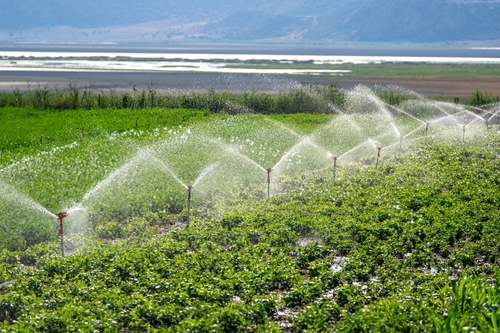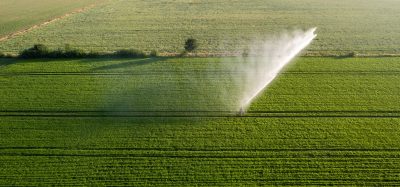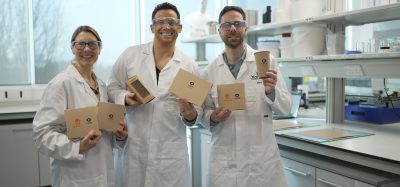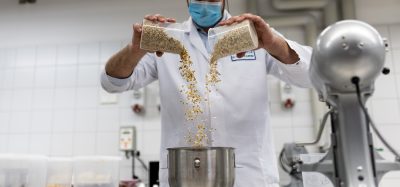How HRMS is transforming contaminant detection in reclaimed water and food crops
Posted: 31 October 2025 | Ian Westcott | No comments yet
As Europe embraces reclaimed water to sustain agriculture, scientists warn that trace contaminants may be entering soils and crops. Learn how advanced HRMS technology helps laboratories identify, quantify and control emerging risks to food safety and compliance.


Monitoring trace pharmaceuticals and pesticides in crops is essential as reclaimed water irrigation introduces emerging contaminants into the food chain. High-resolution mass spectrometry (HRMS) enables food safety laboratories to detect these compounds early, ensuring safer produce and regulatory compliance. Credit: Shutterstock
As Europe expands its use of reclaimed water for irrigation, laboratories are facing new analytical challenges. The conversation has shifted from whether reclaimed water should be used to how best to ensure it remains safe. Following recent discussions on drought resilience and water reuse, attention is now turning to the analytical methods that can uncover what conventional testing might overlook.
High-resolution mass spectrometry enables laboratories to detect trace pharmaceuticals and pesticides before they enter the food chain, ensuring safer produce and regulatory compliance.”
High-resolution mass spectrometry (HRMS) is emerging as a crucial tool in this next phase of water safety monitoring. By revealing trace-level pharmaceuticals, pesticides and transformation products that may pass undetected through traditional screening, HRMS offers food safety scientists and regulators a more complete picture of contaminant exposure across soils and crops.
The hidden cost of water reuse
Reclaimed and treated wastewater can contain a wide variety of contaminants of emerging concern (CECs). These include pharmaceutical residues, personal care products and pesticide breakdown compounds that persist through treatment processes. Once introduced to agricultural systems, they can accumulate in soils and edible plant tissues over time.
Compounds such as Carbamazepine, an antiepileptic drug often used as a marker for wastewater contamination, have been shown to move from irrigation water into crops and remain stable through harvest. Although concentrations are typically low, the cumulative effect of multiple contaminants presents an unknown long-term risk to both consumers and ecosystems.
Analytical blind spots
Traditional triple quadrupole (QqQ) mass spectrometry has served the industry well for targeted pesticide and residue testing. However, it relies on predefined compound lists, making it difficult to detect transformation products or newly introduced chemicals. This creates analytical blind spots that can mask the presence of unexpected contaminants.
For those monitoring reclaimed water, these limitations are increasingly significant. Pharmaceuticals and personal care products can degrade into complex mixtures that evade traditional methods. Without a broader screening capability, laboratories risk underestimating real exposure levels in crops and irrigation soils.
A new era of high-resolution testing
HRMS technology allows analysts to move beyond the constraints of targeted analysis. It enables non-target, suspect and targeted screening within a single run, capturing both known and unknown compounds in one workflow. This versatility is key to addressing the unpredictable chemistry of reclaimed water.
Platforms such as ZenoTOF™ HRMS deliver the sensitivity and selectivity required to identify trace-level contaminants with confidence. They also offer the ability to retrospectively re-analyse stored data as new compounds of concern emerge, ensuring laboratories remain agile in an evolving regulatory landscape.
Safeguarding the food chain
As reclaimed water becomes a permanent feature of sustainable agriculture, ensuring its safety will depend on the analytical strategies laboratories adopt today. HRMS provides the capability to meet both environmental and regulatory demands, offering a future-proof approach to contaminant monitoring that supports food safety, compliance and consumer trust.
To explore advanced HRMS strategies for detecting and mitigating contaminants in water and soil, join Dr Lorena Manzano Sánchez of the University of Almería for the upcoming webinar, Protecting the food chain: Advanced HRMS strategies for contaminants in water and soil, on 12 November 2025 at 2:00PM GMT.
[Register for the webinar here »]
Related topics
Contaminants, Food Safety, Lab techniques, Quality analysis & quality control (QA/QC), Spectroscopy, Sustainability, Water









